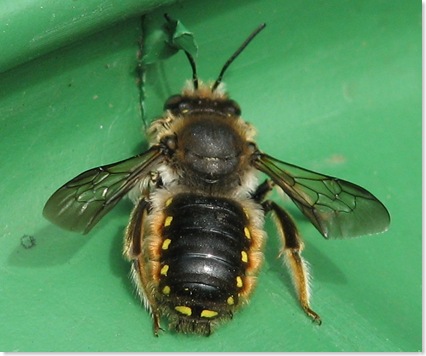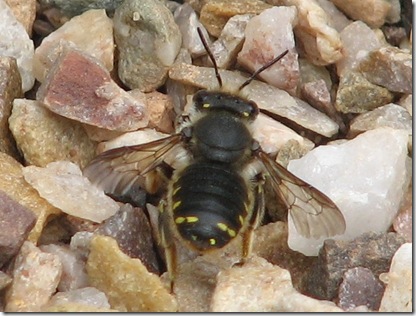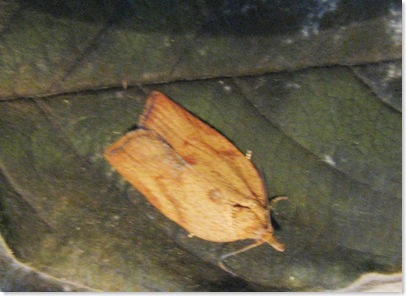A welcome resident in our garden is the wool-carder bee (Anthidium manicatum). There is a male that defends a territory around some of my houseleek (Sempervivum) collection. Both males and females seem particularly fond of the flowers and there is a nest in the corner of one of the pots.
 The picture above is of a male sitting on a plastic watering can. Quite often he will take to the wing, fly round the area and hover in front of the houseleek flowers, occasionally settling on them.
The picture above is of a male sitting on a plastic watering can. Quite often he will take to the wing, fly round the area and hover in front of the houseleek flowers, occasionally settling on them.
The male is, unusually for insects, larger and more aggressive than the female depicted below.

The name 'wool-carder-bee' derives from the fact that the female strips hair from wooly plants, rolls them into a ball and flies off with this tucked between her chin and her forelegs. She uses this wool to line her nest hole and then constructs cells which she fills with a mixture of pollen and honey for her brood.
Gilbert White of Selborne wrote about this species in his journals: "There is a sort of wild bee frequenting the garden-campion for the sake of its tomentum, which probably it turns to some purpose in the business of nidification. It is very pleasant to see with what address it strips off the pubes, running from the top to the bottom of the branch, & shaving it bare with all the dexterity of a hoop-shaver."
I imagine the 'garden-campion' was the rose campion (Lychnis coronaria). Hoop-shaving was the woodland craft of cutting hoops (for binding barrels and so on) from hazel poles.


